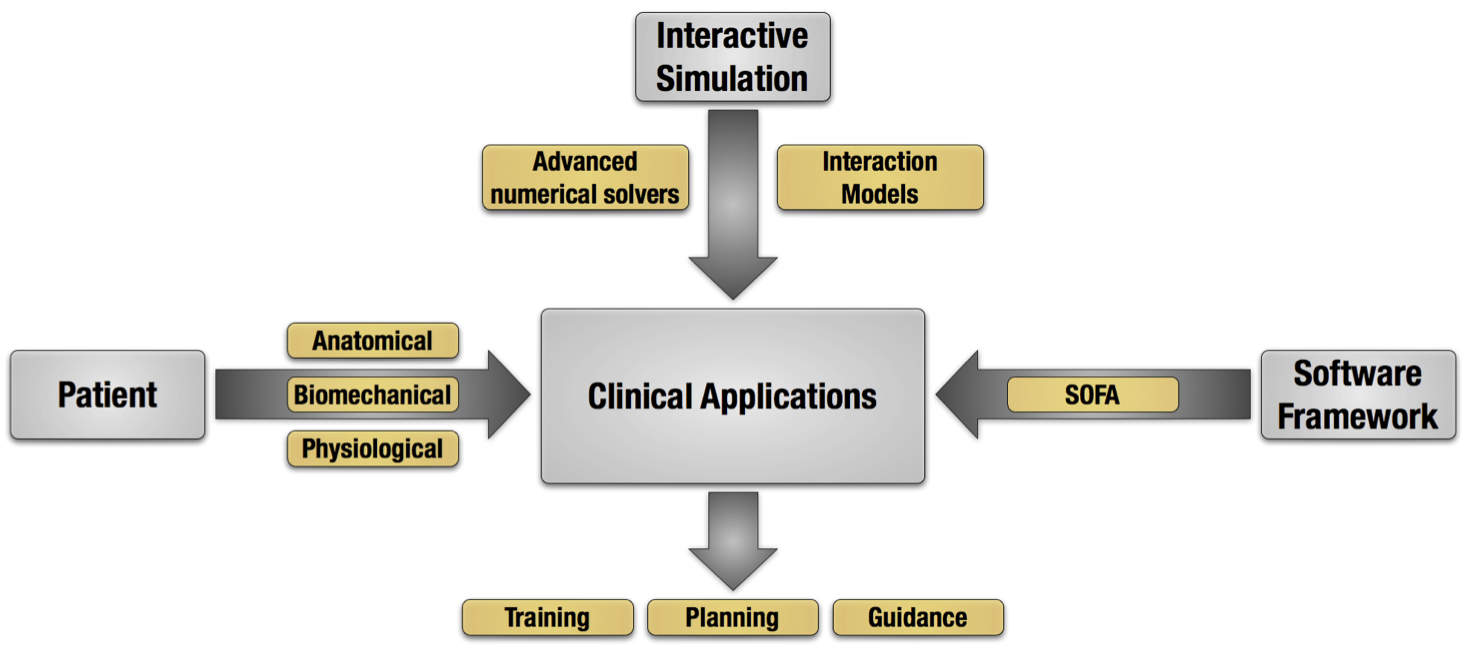Section: Overall Objectives
Challenges
For more than a decade, research groups have been providing comprehensive, virtual and validated computer models of human anatomy and pathologies, mainly dedicated to medical training. The research directions of the SHACRA team essentially aim at improving the realism and fidelity of interactive simulations of medical procedures. This increase in realism makes possible to address new clinical applications, in particular per-operative guidance, that currently rely on imaging techniques, but could greatly benefit from simulation techniques. To reach these clinical objectives (without forgetting training), we have identified several key areas where important improvements remain necessary. Most of these research areas are at the intersection between several scientific domains. As illustrated in Fig. 2 , they include real-time biophysical models (to define new models describing soft tissue deformation or physiological phenomena such as electrophysiology), novel numerical strategies (to enable real-time computation even with the increase in complexity of future models), dynamic topological representations (to support topological changes or adaptivity of the models in areas of interest), and image-driven simulation (to link simulation with real world data such as the one available in an intra-operative context). The SOFA framework (http://www.sofa-framework.org ) remains an essential and valuable mechanism for integrating our various contributions into a series of prototypes, facilitating validation and technology transfer.
In parallel to these scientific objectives, we also propose to focus on a number of applications, through close collaborations with clinicians. Our integration within the IHU1 in Strasbourg illustrates the relevance of our research and strengthens our clinical environment. To support these ambitious objectives, and allow us to develop prototypes that can be assessed by clinicians, we are leading a national initiative on medical simulation and on the SOFA framework with several key partners.


